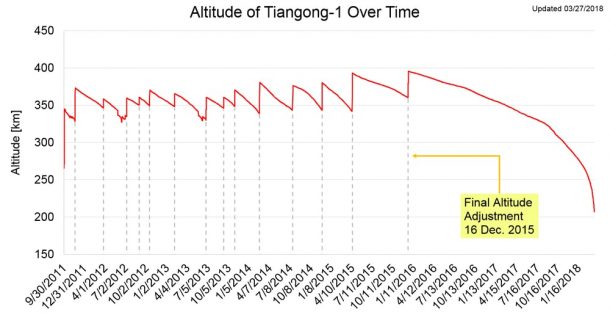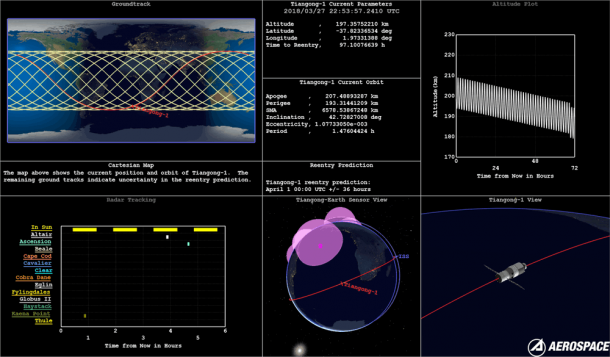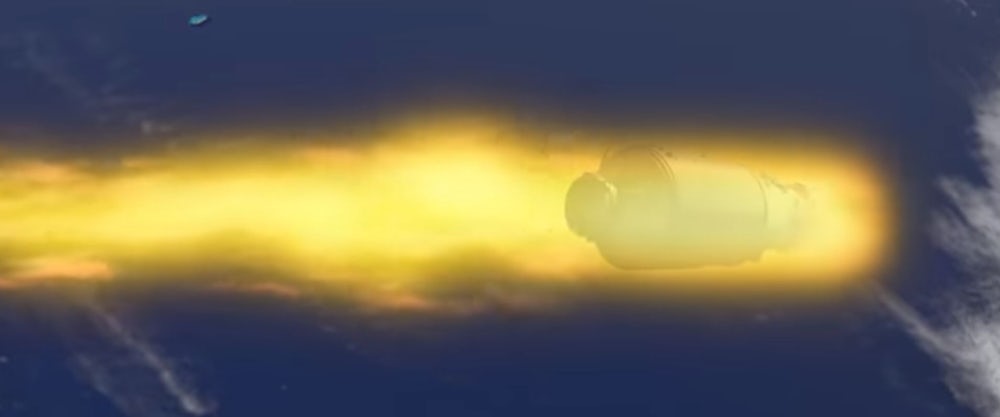Tiangong-1 space station of China is ready to reenter into Earth’s atmosphere, uncontrolled, around 1st April. The update from the Aerospace Corporation, which has been tracking the abandoned orbital laboratory has predicted that it will make its final jump at 00:00 GMT on April 1. The timings have a margin of error of 36 hours. It will burn up between 43 degrees North and 43 degrees South latitudes, approximately. The satellite was launched on 30 September 2011 from the Jiuquan Satellite Launch Center, China. The Tiangong-1 was the first space station by China which has the capacity to accommodate two astronauts.


In 2012, the space station was visited by three astronauts on Shenzhou 9 mission. The mission included China’s first female astronaut as well. It was visited again by Shenzhou 10 in 2013. After the last visit, some undisclosed malfunction occurred in the spacecraft and later on, Chinese National Space Administration said that they have lost telemetry contact with the 8500-kg Tiangong-1. The agency is very secretive but they are sure that the spacecraft is inactive and dormant since June 2016. Since then, the government and the private agencies have been tracking the derelict.
Large satellites and other spacecraft in low-Earth orbit are sent on a controlled trajectory into either a graveyard orbit which is way out of other satellites or plunged into the atmosphere where they burn up over the land-free expanses of the South Pacific. This cannot be made possible for Tiangong-1 without a ground control. Its orbit has been decaying naturally and is slowing down due to the faint traces of the upper atmosphere. Since the thickness of the traces vary with the solar activity the amount of drag it is facing is unknown.

The calculated time of reentry has a 20 percent chance of error. Also, the area on earth where it will fall is also not known. As the time of reentry is approaching, the margin of error narrows down and comes to only 20 percent as measured against the days and hours. According to the AeroSpace Corporation, chances of fragments hitting the Earth are very small and no one can be injured by them. They have still warned the people, that if they find a piece of Tiangong-1, they should not touch it as it can be highly corrosive hydrazine. Hydrazine is used in altitude control thrusters. Tiangong is currently revolving at an average altitude of 200km. It is expected to lose height and come down to 190-km altitude within 72 hours.
Fingers crossed!


